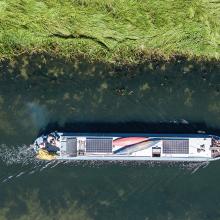NESO publishes cost analysis of decarbonisation pathways
11 Dec 2025 - 2 minute read
Sign in to add this page to your favourites
Sign in or registerSign in or register to manage your favourites
Sign in or register
In our latest Innovation Strategy, we’ve set out our innovation priorities for the year ahead to drive the decarbonisation of Great Britain’s energy system.
We’ve refreshed our innovation priorities and made them more focused by outlining key opportunities that need to be explored based on your feedback. Through these, we’ll explore how we can leverage the power of transformational technologies such as Artificial Intelligence (AI) to enable more efficient operations at the ESO and across the whole energy system. To help prioritise and focus our projects, we’ve also developed a success statement for each innovation priority.
You can also learn about our existing innovation projects across these priority areas and see how we’ve performed over the past year.
Driving the zero-carbon transition: Exploring better forecasting of supply and demand through application of transformational technologies such as AI to enable increased integration of renewables and reduce balancing costs. Collaboration is required to monitor carbon more accurately across the energy system to inform decisions on optimal routes to net zero.
Whole Energy System: Understanding how multiple energy vectors can be co-optimised to enable the decarbonisation of different sectors (heat, power, transport and industry) while maintaining a secure and resilient energy system.
Digital, AI and Data: Driving towards digitalisation and implementation of AI to enable more efficient operations including faster and more informed decision making, automation of processes and better user experiences. Digital, AI and Data are enablers to address the challenges of our other innovation priorities. This is reflected across our innovation portfolio. For example, tools like the Dynamic Reserve Setting (DRS) model and the ambitious Advanced Dispatch Optimiser (ADO) project leverage AI to empower our control room with unprecedented levels of insight.
We will lead the transformation to a fully integrated, whole energy system that is cyber-secure.
Future Markets: Designing and testing market reforms to facilitate the net zero transition at lowest cost. We’ll do this with coherence of markets and removal of barriers to enable diversity of market actors.
Constraint Management: Testing a variety of innovative, market-led solutions and technologies to identify the most economic solutions to mitigate constraints and reduce costs for consumers. Opportunities also remain to better forecast the occurrence of constraints, including the cost impacts.
System Stability & Resilience: Improving our understanding of how and why the system may be impacted by different factors and how to mitigate against them, while operating a system with increasing non-synchronous generation.
Find out more about these priorities and our projects to deliver them in our Innovation Strategy.
Visit our website to find out about how to get involved with ESO Innovation.
If you have feedback on this strategy, email us here.